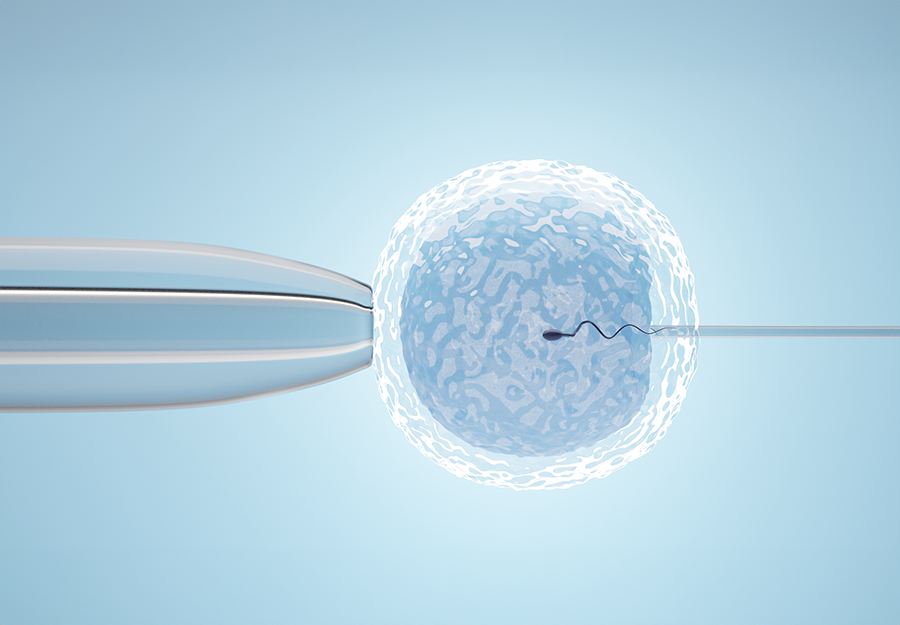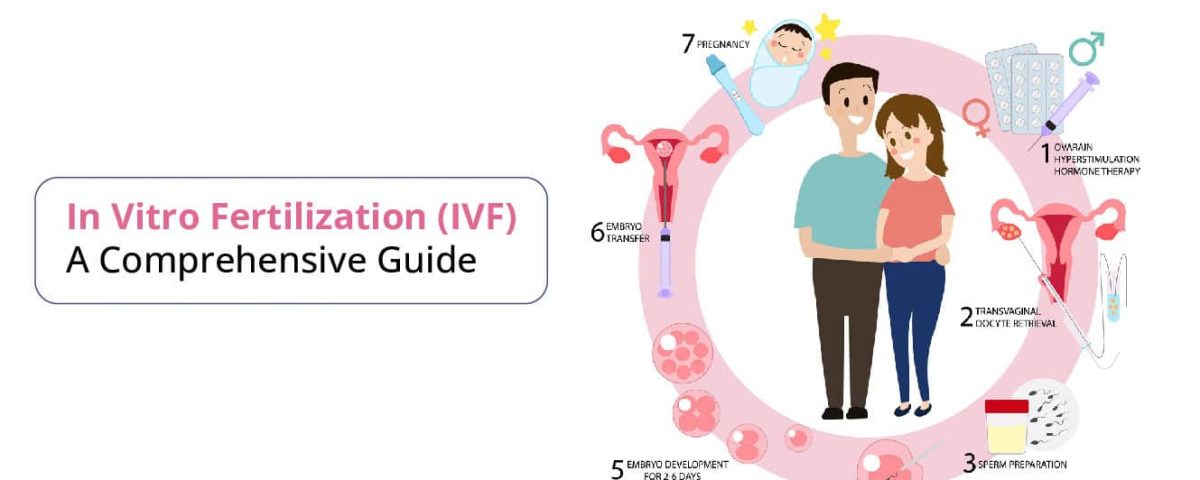
What’s IVF? Your Ultimate Guide to In Vitro Fertilization
March 31, 2025Your IVF Due Date Calculator Guide: Everything You Need to Know After In Vitro Fertilization
So, you’ve just found out you’re pregnant after IVF—congratulations! That little miracle growing inside you is a big deal, and now you’re probably wondering, “When will my baby arrive?” Unlike a natural pregnancy, where due dates can feel like a guessing game, IVF gives you a special edge: you know exactly when things got started. That’s where an IVF due date calculator comes in—it’s like your personal pregnancy GPS. But how does it work? What makes it different? And what juicy details about IVF pregnancies haven’t you heard yet? Buckle up, because we’re diving deep into everything you need to know—plus some fun, surprising twists you won’t find anywhere else!
Why IVF Due Dates Are a Little Different (and Cooler!)
When you conceive naturally, doctors usually guess your due date based on the first day of your last period. But let’s be real—most people don’t have a calendar-perfect 28-day cycle, and ovulation can be sneaky. With IVF, though? You’re in the driver’s seat. The process gives you precise dates—like the day your eggs were retrieved or your embryo was transferred—so your due date isn’t some fuzzy estimate. It’s based on science and timing you can actually pinpoint.
The Magic of Embryo Transfer Dates
Here’s the scoop: your due date hinges on the embryo transfer date, which is when your doctor places that tiny embryo into your uterus. Most transfers happen either 3 days or 5 days after fertilization, depending on how long the embryo grows in the lab. This little detail changes the math—and it’s what makes IVF due date calculators so unique.
- Day 3 Transfer: The embryo’s been growing for 3 days before it’s transferred. Think of it like planting a seed that’s already sprouted a bit.
- Day 5 Transfer: This is the VIP treatment—your embryo’s reached the blastocyst stage (a more developed phase) before the transfer. It’s like planting a mini tree instead of a seed!
Why does this matter? Because the embryo’s age affects how many days you count forward to find your due date. Spoiler alert: it’s not the usual 40 weeks you hear about with natural pregnancies. Stick with me—we’ll break it down step-by-step later!
Fun Fact: You’re Pregnant Before You Feel It
Here’s something wild: with IVF, you’re technically pregnant the moment that embryo is transferred—even though it hasn’t implanted yet! Implantation (when the embryo snuggles into your uterus lining) can take 6-10 days after transfer. So, while your body’s still catching up, the calculator already knows your baby’s on the way. How cool is that?
How to Calculate Your IVF Due Date Like a Pro
Ready to figure out when you’ll meet your little one? Let’s walk through the process. You don’t need to be a math whiz—IVF due date calculators do the heavy lifting—but understanding the basics makes it way more fun. Plus, you’ll impress your friends at the next baby shower!
The Simple Formula (No Calculator Needed!)
Here’s the insider trick: a full-term pregnancy lasts about 266 days from conception. With IVF, “conception” is the day your egg was fertilized in the lab. Since you know the embryo’s age at transfer, you just adjust the timeline:
- For a Day 3 Transfer: Add 263 days to your transfer date (266 minus the 3 days the embryo’s already grown).
- For a Day 5 Transfer: Add 261 days to your transfer date (266 minus the 5 days it’s been growing).
Example: Say your Day 5 transfer was on March 1, 2025. Add 261 days, and you land on November 17, 2025. That’s your estimated due date (EDD)! Easy, right?
Using an IVF Due Date Calculator
If counting days sounds like a chore, don’t worry—online IVF due date calculators are your new best friend. Here’s how to use one:
- Find a Reliable Tool: Look for calculators designed specifically for IVF (not regular pregnancy ones—they won’t account for embryo age).
- Enter Your Transfer Date: Pop in the exact date of your embryo transfer.
- Pick Day 3 or Day 5: Tell it which type of transfer you had.
- Hit Calculate: Boom! You’ll get your due date, plus bonus info like how many weeks pregnant you are today.
Pro Tip: Some calculators even show your trimesters or key prenatal testing dates. It’s like having a pregnancy planner in your pocket!
What About Frozen Embryo Transfers (FET)?
If you used a frozen embryo (FET), the process is the same—your due date still depends on the transfer date and embryo age. The cool part? Frozen embryos are “paused” in time. Whether they were frozen for a month or a year, a Day 5 embryo is still a Day 5 embryo when it’s thawed and transferred. Science is wild!
Little-Known Secrets of IVF Due Dates
Okay, let’s spill some tea. IVF due dates aren’t just about numbers—they come with quirks and surprises most people don’t talk about. Here’s what I’ve dug up that’ll make you the smartest mom-to-be in the room.
Twins or Triplets Change the Game
IVF often involves transferring more than one embryo to boost your chances of success. If you’re lucky (or extra blessed!), you might end up with twins or even triplets. Here’s the catch: multiples usually arrive earlier than single babies.
- Twins: Typically born around 36-37 weeks (about 3-4 weeks early).
- Triplets: Often delivered around 32-34 weeks.
So, your calculator might say one date, but if you’re carrying multiples, expect a slightly earlier debut. An ultrasound around 6-8 weeks can confirm how many little ones are in there!
Your Due Date Might Shift (and That’s Okay!)
Even with IVF’s precision, due dates aren’t set in stone. Early ultrasounds (around 6-7 weeks) measure your baby’s size and can tweak the estimate. For example, if your embryo implanted a bit later than expected, your doctor might adjust the date by a few days. Nurse Practitioner Monica Moore, who’s been helping IVF moms for over 20 years, says, “Ultrasounds give us a reality check—embryo age is a starting point, but baby’s growth tells the full story.”
The Emotional Rollercoaster of Waiting
Here’s something you won’t find in most articles: knowing your due date can feel like a double-edged sword. On one hand, it’s exciting to circle November 17 on your calendar. On the other, those 9 months can feel endless after the IVF journey. One mom I chatted with said she baked a cake every month to celebrate getting closer—talk about a sweet coping trick!
Top Questions Moms Ask About IVF Due Dates
You’ve got questions, and I’ve got answers. Let’s tackle the stuff you’re probably Googling late at night (don’t worry, we’ve all been there!).
How Accurate Are IVF Due Dates?
IVF due dates are more accurate than natural ones because you skip the “when did I ovulate?” guesswork. A 2020 study from the Journal of Assisted Reproduction and Genetics found that IVF pregnancies align within 5 days of their calculated due date 85% of the time—way better than the 60% for natural pregnancies. Still, only about 4% of babies arrive exactly on their due date, so think of it as a ballpark.
Can I Use a Regular Due Date Calculator?
Nope! Regular calculators assume you’re counting from your last period, which doesn’t apply to IVF. Using one could throw you off by 2 weeks or more. Stick to an IVF-specific tool for the win.
What If I Don’t Know My Transfer Date?
Lost your paperwork? No panic! Call your fertility clinic—they’ll have the exact date of your egg retrieval or transfer. Dr. Jessica Ryniec, an IVF expert, told me, “Your clinic’s records are gold—those dates are the backbone of your due date math.”

Practical Tips to Nail Your IVF Due Date Prep
Now that you’ve got the basics, let’s get real about what to do with this info. These tips will keep you organized, sane, and maybe even a little excited!
Track Your Pregnancy Milestones
Your due date isn’t just a finish line—it’s a roadmap. Here’s a quick guide to key moments:
| Weeks Pregnant | Milestone | What to Do |
|---|---|---|
| 6-8 weeks | First ultrasound | Confirm heartbeat and multiples |
| 12 weeks | End of first trimester | Share the news (if you’re ready!) |
| 20 weeks | Anatomy scan | Find out the gender (optional!) |
| 36 weeks | Weekly checkups start | Pack your hospital bag |
Action Step: Plug your due date into a calendar app and set reminders for these dates. You’ll feel like a pregnancy pro!
Plan Around Your Due Date (Realistically)
Babies don’t care about your schedule, but planning helps. Here’s what to consider:
- ✔️ Work: Tell your boss a rough timeline so you can ease into maternity leave.
- ✔️ Travel: Avoid long trips after 36 weeks (airlines might say no anyway!).
- ❌ Overbooking: Don’t pack November with 10 baby showers—keep it chill.
Fun Idea: One couple I heard about turned their due date into a mini “guess the arrival” game with family—winner got bragging rights!
Boost Your Confidence with Tech
Tech’s your sidekick here. Beyond calculators, try:
- Pregnancy Apps: Apps like What to Expect sync with your IVF due date and send weekly updates (e.g., “Your baby’s the size of a blueberry!”).
- Ovulation Trackers: If you’re planning a sibling later, these gadgets (like Ava or Oura) can help you decode your body’s signals post-IVF.

The Science Behind IVF Due Dates (Made Simple)
Let’s geek out for a sec—without getting too textbook-y. Understanding the “why” behind your due date makes it less mysterious and more amazing.
Embryo Development 101
After fertilization, your embryo grows fast:
- Day 3: 6-8 cells, looking like a tiny raspberry.
- Day 5: Blastocyst stage, with 70-100 cells and a fluid-filled center—like a microscopic water balloon!
The transfer day locks in how much “head start” your baby has, which is why Day 5 transfers shave 2 days off the 263-day countdown.
Latest Research You’ll Love
A 2023 study in Fertility and Sterility found that Day 5 transfers might lead to slightly earlier deliveries (by 1-2 days) compared to Day 3, thanks to better implantation timing. Researchers think blastocysts are pickier about when they stick, which could fine-tune your due date even more. Cool, huh?
Beyond the Calculator: What’s Next?
Your due date’s just the beginning. Here’s how to take it to the next level and enjoy the ride.
Bonding with Your Due Date
Turn that date into something personal:
- Countdown Crafts: Make a paper chain with 261 links (for Day 5) and rip one off daily.
- Name Game: Brainstorm names tied to your due date month—November babies could be Autumn or Ember!
Handling the “When’s the Baby Coming?” Questions
Friends and family will ask nonstop. Try this: “We’re aiming for mid-November, but babies love surprises!” It’s vague enough to keep the pressure off.
Prepping for Early or Late Arrivals
Only 4% of babies hit their due date, so be ready for curveballs:
- Early Birds: Stock up on preemie clothes just in case (they’re adorable anyway!).
- Late Bloomers: Have a Netflix queue ready for those extra days of waiting.
Dr. Luis Murrain, an OB-GYN, puts it perfectly: “Your due date’s a guidepost, not a deadline—babies write their own story.”
Wrapping It Up: Your IVF Due Date Adventure
So, there you have it—your ultimate guide to cracking the IVF due date code! From the magic of embryo transfers to the nitty-gritty of calculators, you’re now armed with everything you need to plan, dream, and maybe even bake a monthly cake (no judgment here!). IVF due dates are special because they blend science with your unique journey, giving you a front-row seat to your baby’s big debut.
Let’s Chat!
What’s your due date? How are you celebrating the countdown? Drop a comment below—I’d love to hear your story! And if you’ve got a quirky tip for waiting it out, share that too. Let’s make this a cozy corner for IVF moms-to-be!
